Studies On Residential Power Line Noise - Part 2

DarqueKnight
Posts: 6,765
Introduction
As part of my continuing efforts in subversive technical literature, I offer the second part of my "Studies On Residential Power Line Noise". Part 1 of this series is posted here.
An often recited mantra among power cable naysayers cult goes something like this:
"A power amplifier has all the required filtering it needs to remove power line noise. High priced, so-called "better" power cables are a scam." People who are hearing these so-called "improvements" are victims of placebo effect and are, in fact, having aural hallucinations."
There may be some amplifiers may not benefit from or even require a better quality power cord. Their power supplies may indeed filter out all the power line trash. I really don't know if such amplifiers exist. If they do, I imagine they would be quite expensive. All the amplifiers I currently own and have owned in the past have benefited sonically from better shielded, heavier gauge power cords with better connectors.
Some Quantitative Results
The 60 Hz track of the "Autosound 2000 Low Frequency Test CD" was used to feed a 60 Hz signal to my Parasound Halo JC 1 monoblock amplifiers. A Tektronix TDS 2012 oscilloscope was connected to the left amplifier outputs and sine wave and FFT (Fast Fourier Transform) plots were obtained. Each vertical dot on the FFT plots represents 2 dB of signal magnitude. Each horizontal dot represents 10 Hertz of frequency.
Oscilloscope readings were first taken at the left amplifier's output with the stock 14 gauge power cord attached. Next, oscilloscope readings were taken at the amplifier's output stock power cord replaced with a PS Audio xStream Statement SC power cord.
First, let us look at spectral plots of the power signals coming from the wall, the stock power cable, and the Statement SC power cable.
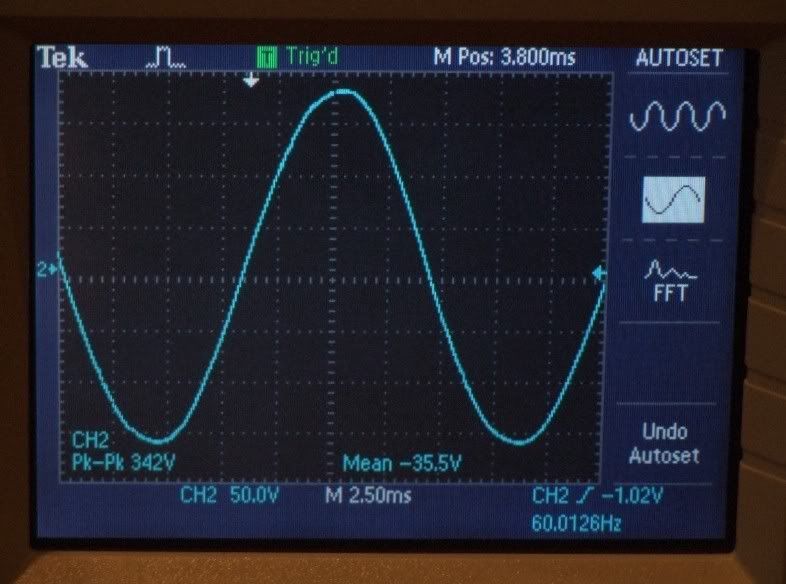
Figure 1. Sine wave plot of the power coming from the left new dedicated 20A outlet.
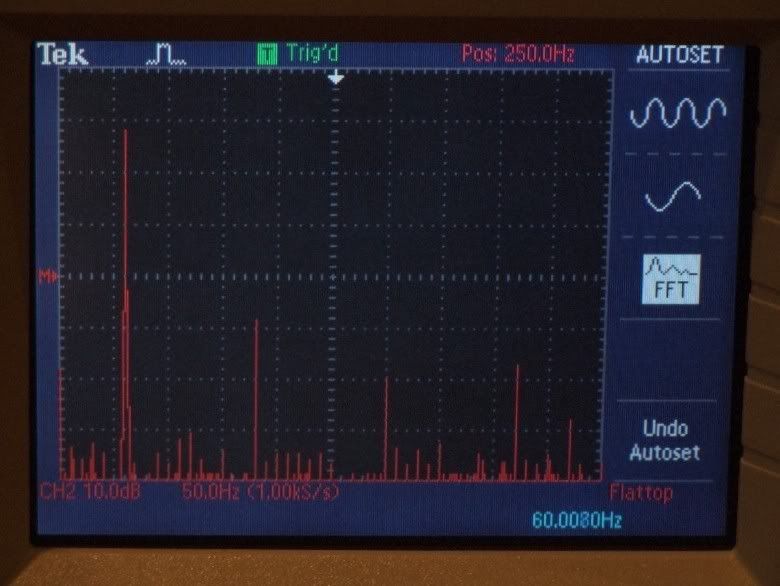
Figure 2. FFT plot of the power coming from the left new dedicated 20A outlet.
The dedicated power circuit is wired with Romex Simpull E18679 12 AWG wire. It is terminated with a PS Audio Power Port duplex receptacle.
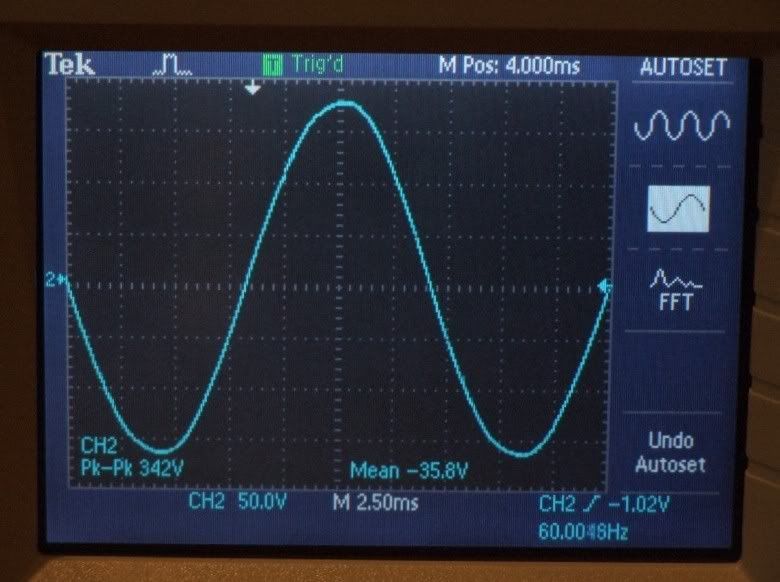
Figure 3. Sine wave plot of the power coming from the stock JC 1 amplifier power cord.
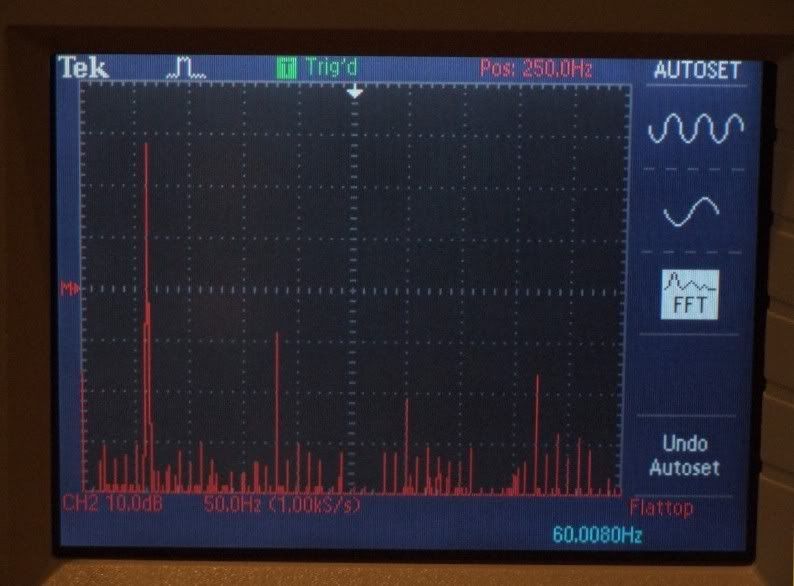
Figure 4. FFT plot of the power coming from the stock JC 1 amplifier power cord.
The sine wave plots of the power coming from the wall and from the stock power cord (figures 1 and 3) look nearly identical with identical voltage levels. However, when we look at the frequency domain (FFT) plots, the gremlins are revealed. Comparing figures 2 and 4, we see a substantial increase in noise around the fundamental 60 Hz frequency and the 3rd, 5th, and 7th harmonics.
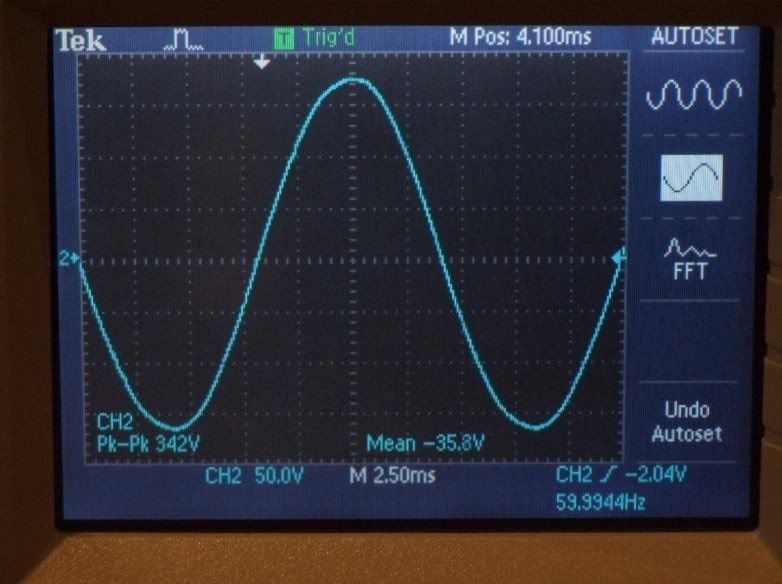
Figure 5. Sine wave plot of the power coming from the PS Audio xStream Statement SC amplifier power cord.
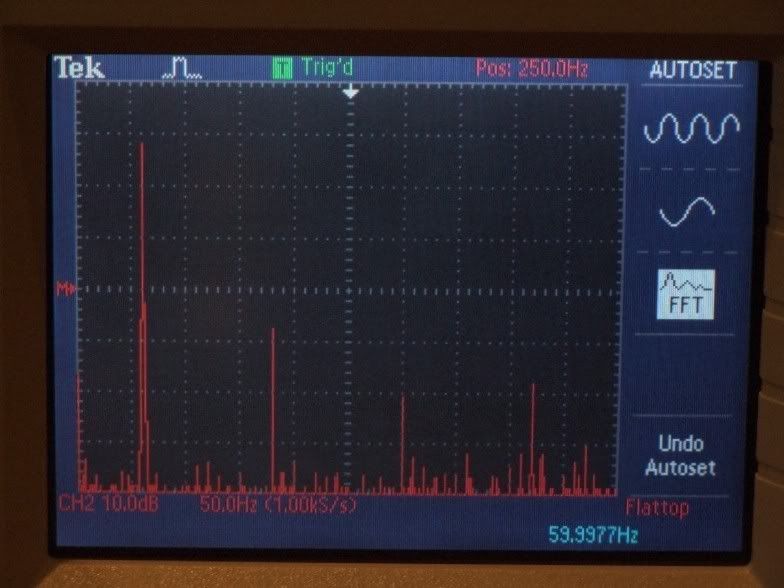
Figure 6. FFT plot of the power coming from the PS Audio xStream Statement SC
amplifier power cord.
The sine wave plots of the power coming from the wall socket, stock amplifier power cord, and Statement SC amplifier power cord all look virtually identical. When we look at the FFT plots, we see some differences. Compare the FFT plot of the power coming from the Statement SC power cord (figure 6) to the FFT plot of the power coming from the stock power cord (figure 4). Remember, everything except for that big 60 Hz spike on the left is NOISE.
Now, compare the FFT plot of the power coming from the Statement SC power cord (figure 6) to the FFT plot of the power coming from the wall (figure 2). The power coming from the Statement SC cord has less noise density at 60 Hz than the power coming from the wall.
Between the signals shown in figures 4 and 6, which would you prefer to send to your power amplifier? Some would say it does not matter. According to the conventional "wisdom", the higher noise content of the stock amplifier power cord does not matter because the amplifier's power supply filters with take care of it the way that Master Windu "took care" of Jango Fett.
We'll see.
Measurements Of Noise At The Power Amplifier Outputs
As stated previously, a test CD was used to input a 60 Hz signal to the power amplifiers. The signal path was as follows:
Cary Audio CD 306 SACD Pro SACD player --> Audioquest Sky XLR 1.5m Interconnects --> Pass Laboratories X0.2 Preamp --> Audioquest Sky XLR 1.0m Interconnects --> Parasound Halo JC 1 Power Amplifiers --> Tektronix TDS 2012 Oscilloscope (Left Channel)/Polk Audio SDA SRS (Stereo Dimensional Array Signature Reference System) 1.2TL loudspeaker (Right Channel). The left speaker cables were disconnected from the amplifier.

Figure 7. Sine wave plot of output from JC 1 amplifier with stock power cord.
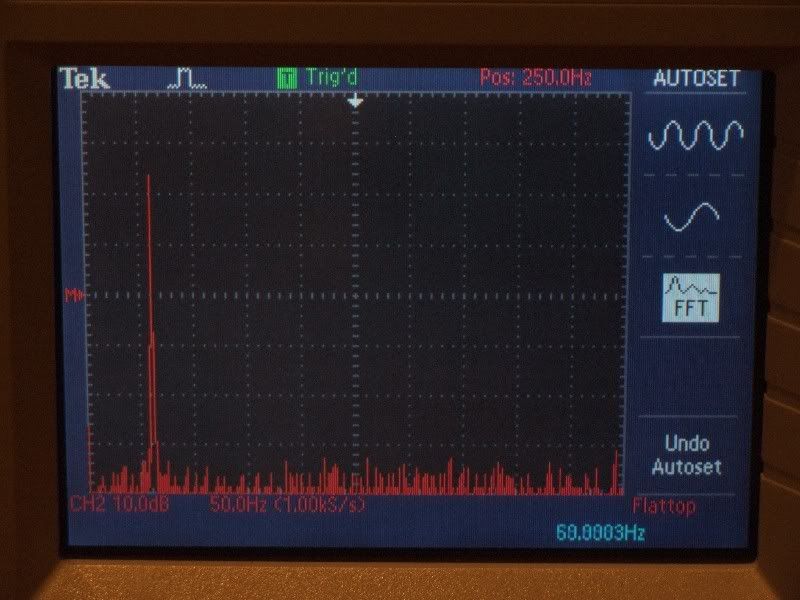
Figure 8. FFT plot of output from JC 1 amplifier with stock power cord.
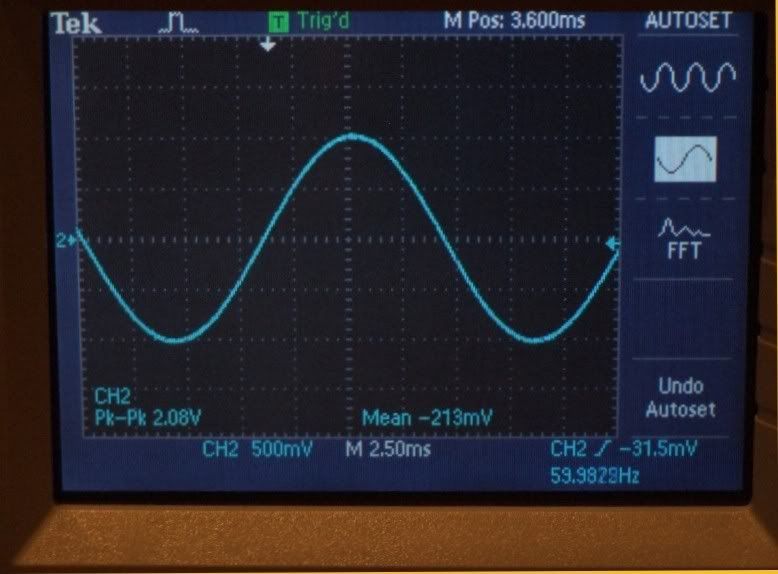
Figure 9. Sine wave plot of output from JC 1 amplifier with Statement SC power cord.
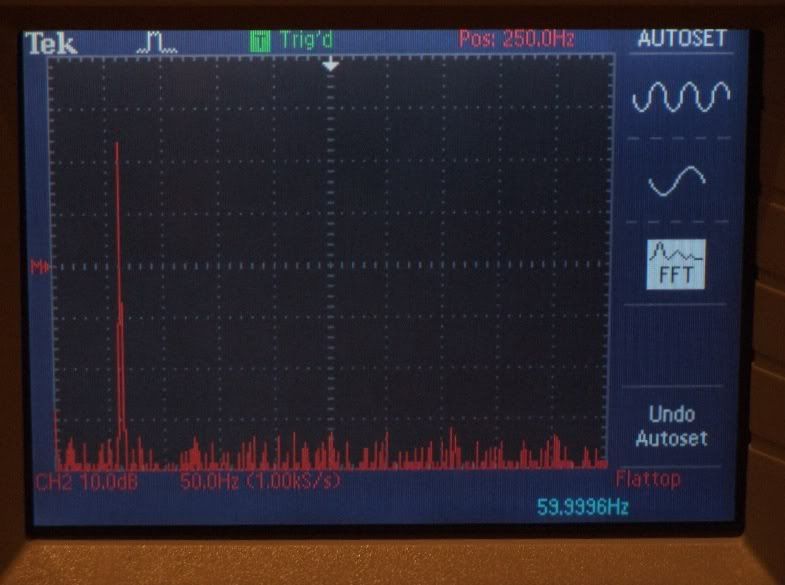
Figure 10. FFT plot of output from JC 1 amplifier with Statement SC power cord.
The sine wave plots of the 60 Hz signal taken at the left amplifier's outputs are virtually identical for the stock power cord and the Statement SC power cord (figures 7 and 9). I imagine that some audio enthusiasts would take these plots and go somersaulting down the yellow brick road while screaming "see, we told you cables didn't make a difference". However, before we go traipsing down those bricks, we should take a moment to look at the frequency domain plots. There may be some gremlins that did not show up in the time domain plots.
The spectral plots for the amplifier outputs with the stock and Statement power cords are shown in figures 8 and 10. Both plots look very good and provide evidence that the JC 1 does an excellent job of cleaning the power signal. The main difference between the FFT plots is that there is a bit less noise congestion around 60 Hz. If you copy both figures to your imaging software and flip between them or if you print them out and compare them, you will also notice a little less noise congestion throughout the frequency range.
Perhaps the stock power cord would suffice if the amplifier's outputs could send their signals to the loudspeakers without an intervening medium. Unfortunately, the signal has yet another gauntlet to run: the trip through the speaker cables.:eek:
Measurements Of Noise At The Loudspeaker Inputs
The left speaker cable was reconnected to the amplifier and the 60 Hz tone was feed to both speakers. The oscilloscope was connected to the inputs of the left speaker. Sine wave and FFT plots were obtained, first with the stock power cord attached and then with the Statement SC power cord attached.
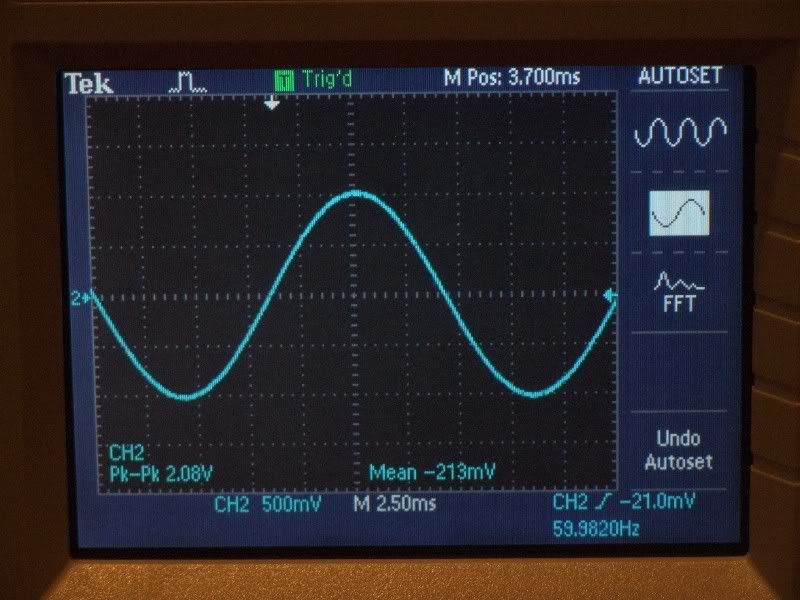
Figure 11. Sine wave plot at input of left speaker with stock power cord.
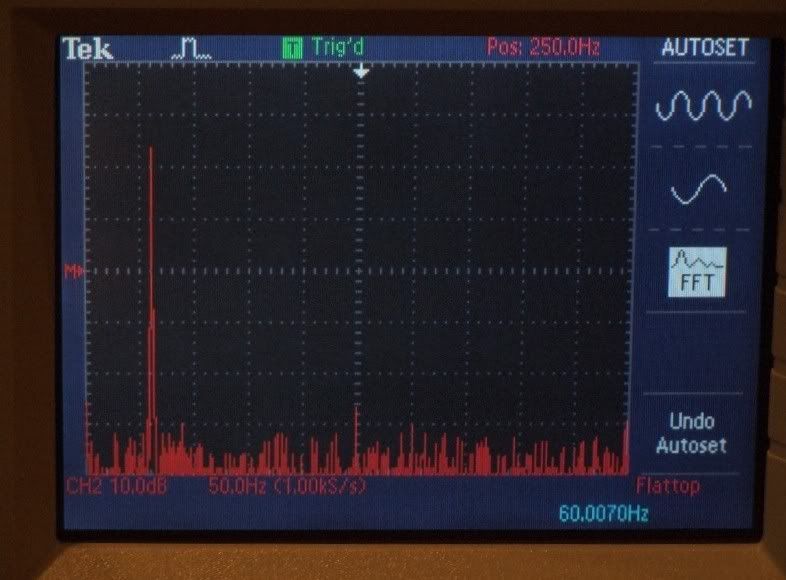
Figure 12. FFT plot at input of left speaker with stock power cord.
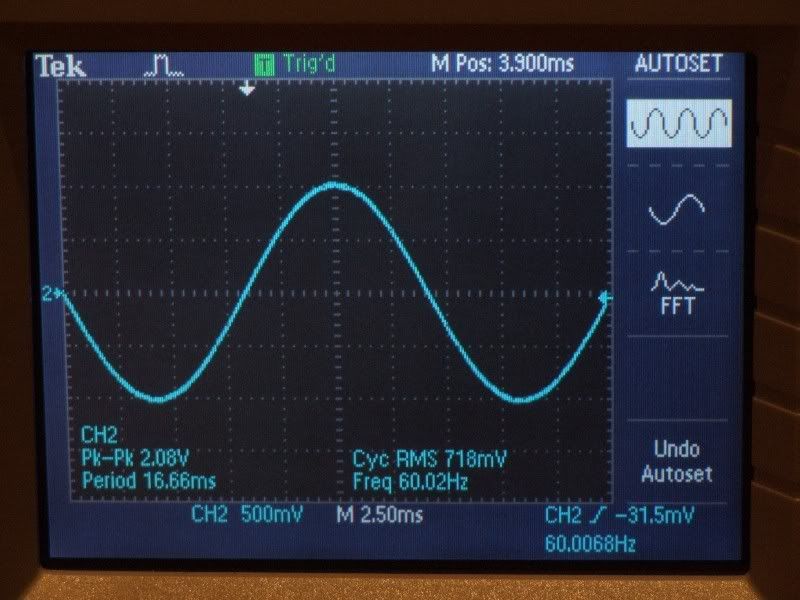
Figure 13. Sine wave plot at input of left speaker with Statement SC power cord.
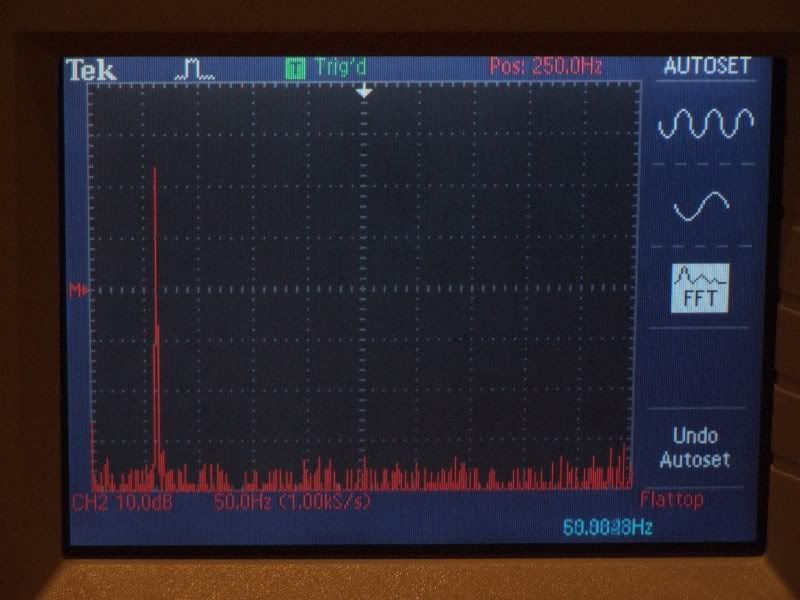
Figure 14. FFT plot at input of left speaker with Statement SC power cord.
Do we even need to discuss figures 11 and 13? Can we just go directly to figures 12 and 14? Thanks.
If you copy figures 12 and 14 and flip between them, you will see an increase in the noise density throughout the frequency range. You will also see an average 4 dB increase in noise magnitude. That means over twice as much noise power was being dumped into my extensively modified and esteemed SDA SRS 1.2TL speakers with the stock power cord than with the Statement SC power cord. Such a increase in noise power obscures a lot of musical and imaging detail. Bear in mind that the Audioquest Everest speaker cables are a very low noise design. In the future, I will look at the noise figures for some of my other speaker cables. However, I am not quite brave enough for that at this time.
Another thing to consider is that all speaker cables have noise in the conductors. The noise in the signal can interact with the noise in the cable and rob the signal of musical detail and imaging. It is evident that minimizing the noise entering an amplifier's power supply minimizes the noise that is output at the amplifier's output. Subsequently, less noise is available to interact with the speaker cable's noise and less cumulative noise is available to be dumped into the speaker terminals...and our ears.
As part of my continuing efforts in subversive technical literature, I offer the second part of my "Studies On Residential Power Line Noise". Part 1 of this series is posted here.
An often recited mantra among power cable naysayers cult goes something like this:
"A power amplifier has all the required filtering it needs to remove power line noise. High priced, so-called "better" power cables are a scam." People who are hearing these so-called "improvements" are victims of placebo effect and are, in fact, having aural hallucinations."
There may be some amplifiers may not benefit from or even require a better quality power cord. Their power supplies may indeed filter out all the power line trash. I really don't know if such amplifiers exist. If they do, I imagine they would be quite expensive. All the amplifiers I currently own and have owned in the past have benefited sonically from better shielded, heavier gauge power cords with better connectors.
Some Quantitative Results
The 60 Hz track of the "Autosound 2000 Low Frequency Test CD" was used to feed a 60 Hz signal to my Parasound Halo JC 1 monoblock amplifiers. A Tektronix TDS 2012 oscilloscope was connected to the left amplifier outputs and sine wave and FFT (Fast Fourier Transform) plots were obtained. Each vertical dot on the FFT plots represents 2 dB of signal magnitude. Each horizontal dot represents 10 Hertz of frequency.
Oscilloscope readings were first taken at the left amplifier's output with the stock 14 gauge power cord attached. Next, oscilloscope readings were taken at the amplifier's output stock power cord replaced with a PS Audio xStream Statement SC power cord.
First, let us look at spectral plots of the power signals coming from the wall, the stock power cable, and the Statement SC power cable.

Figure 1. Sine wave plot of the power coming from the left new dedicated 20A outlet.

Figure 2. FFT plot of the power coming from the left new dedicated 20A outlet.
The dedicated power circuit is wired with Romex Simpull E18679 12 AWG wire. It is terminated with a PS Audio Power Port duplex receptacle.

Figure 3. Sine wave plot of the power coming from the stock JC 1 amplifier power cord.

Figure 4. FFT plot of the power coming from the stock JC 1 amplifier power cord.
The sine wave plots of the power coming from the wall and from the stock power cord (figures 1 and 3) look nearly identical with identical voltage levels. However, when we look at the frequency domain (FFT) plots, the gremlins are revealed. Comparing figures 2 and 4, we see a substantial increase in noise around the fundamental 60 Hz frequency and the 3rd, 5th, and 7th harmonics.

Figure 5. Sine wave plot of the power coming from the PS Audio xStream Statement SC amplifier power cord.

Figure 6. FFT plot of the power coming from the PS Audio xStream Statement SC
amplifier power cord.
The sine wave plots of the power coming from the wall socket, stock amplifier power cord, and Statement SC amplifier power cord all look virtually identical. When we look at the FFT plots, we see some differences. Compare the FFT plot of the power coming from the Statement SC power cord (figure 6) to the FFT plot of the power coming from the stock power cord (figure 4). Remember, everything except for that big 60 Hz spike on the left is NOISE.
Now, compare the FFT plot of the power coming from the Statement SC power cord (figure 6) to the FFT plot of the power coming from the wall (figure 2). The power coming from the Statement SC cord has less noise density at 60 Hz than the power coming from the wall.
Between the signals shown in figures 4 and 6, which would you prefer to send to your power amplifier? Some would say it does not matter. According to the conventional "wisdom", the higher noise content of the stock amplifier power cord does not matter because the amplifier's power supply filters with take care of it the way that Master Windu "took care" of Jango Fett.
We'll see.
Measurements Of Noise At The Power Amplifier Outputs
As stated previously, a test CD was used to input a 60 Hz signal to the power amplifiers. The signal path was as follows:
Cary Audio CD 306 SACD Pro SACD player --> Audioquest Sky XLR 1.5m Interconnects --> Pass Laboratories X0.2 Preamp --> Audioquest Sky XLR 1.0m Interconnects --> Parasound Halo JC 1 Power Amplifiers --> Tektronix TDS 2012 Oscilloscope (Left Channel)/Polk Audio SDA SRS (Stereo Dimensional Array Signature Reference System) 1.2TL loudspeaker (Right Channel). The left speaker cables were disconnected from the amplifier.

Figure 7. Sine wave plot of output from JC 1 amplifier with stock power cord.

Figure 8. FFT plot of output from JC 1 amplifier with stock power cord.

Figure 9. Sine wave plot of output from JC 1 amplifier with Statement SC power cord.

Figure 10. FFT plot of output from JC 1 amplifier with Statement SC power cord.
The sine wave plots of the 60 Hz signal taken at the left amplifier's outputs are virtually identical for the stock power cord and the Statement SC power cord (figures 7 and 9). I imagine that some audio enthusiasts would take these plots and go somersaulting down the yellow brick road while screaming "see, we told you cables didn't make a difference". However, before we go traipsing down those bricks, we should take a moment to look at the frequency domain plots. There may be some gremlins that did not show up in the time domain plots.
The spectral plots for the amplifier outputs with the stock and Statement power cords are shown in figures 8 and 10. Both plots look very good and provide evidence that the JC 1 does an excellent job of cleaning the power signal. The main difference between the FFT plots is that there is a bit less noise congestion around 60 Hz. If you copy both figures to your imaging software and flip between them or if you print them out and compare them, you will also notice a little less noise congestion throughout the frequency range.
Perhaps the stock power cord would suffice if the amplifier's outputs could send their signals to the loudspeakers without an intervening medium. Unfortunately, the signal has yet another gauntlet to run: the trip through the speaker cables.:eek:
Measurements Of Noise At The Loudspeaker Inputs
The left speaker cable was reconnected to the amplifier and the 60 Hz tone was feed to both speakers. The oscilloscope was connected to the inputs of the left speaker. Sine wave and FFT plots were obtained, first with the stock power cord attached and then with the Statement SC power cord attached.

Figure 11. Sine wave plot at input of left speaker with stock power cord.

Figure 12. FFT plot at input of left speaker with stock power cord.

Figure 13. Sine wave plot at input of left speaker with Statement SC power cord.

Figure 14. FFT plot at input of left speaker with Statement SC power cord.
Do we even need to discuss figures 11 and 13? Can we just go directly to figures 12 and 14? Thanks.
If you copy figures 12 and 14 and flip between them, you will see an increase in the noise density throughout the frequency range. You will also see an average 4 dB increase in noise magnitude. That means over twice as much noise power was being dumped into my extensively modified and esteemed SDA SRS 1.2TL speakers with the stock power cord than with the Statement SC power cord. Such a increase in noise power obscures a lot of musical and imaging detail. Bear in mind that the Audioquest Everest speaker cables are a very low noise design. In the future, I will look at the noise figures for some of my other speaker cables. However, I am not quite brave enough for that at this time.
Another thing to consider is that all speaker cables have noise in the conductors. The noise in the signal can interact with the noise in the cable and rob the signal of musical detail and imaging. It is evident that minimizing the noise entering an amplifier's power supply minimizes the noise that is output at the amplifier's output. Subsequently, less noise is available to interact with the speaker cable's noise and less cumulative noise is available to be dumped into the speaker terminals...and our ears.
Proud and loyal citizen of the Digital Domain and Solid State Country!
Post edited by DarqueKnight on
Comments
-
Discussion Of Results
The small differences in noise power between the amplifier outputs with the stock and Statement SC cables would not appear to be of immediate concern when comparing figures 8 and 10. However, we see that after the higher noise signal passes through the speaker cable, it looks disproportionately worse than the lower noise signal.
While comparing the stock power cable's amplifier output signal FFT (figure 8) with its speaker input FFT (figure 12), we see a substantial increase in noise around 60 Hz and throughout the entire frequency spectrum.
While comparing the Statement SC's amplifier output signal FFT (figure 10) with its speaker input FFT (figure 14), we see a general flattening of the entire noise spectrum with a moderate increase in noise density throughout. Even a small amount of noise prevention can reap big rewards further down the audio chain. Conversely, the introduction of even a small amount of noise can have disproportionately damaging effects further down the audio chain.
It was interesting to "fall back" and listen with the stock power cords. It was not unpleasant, but I was very surprised at the amount of musical details on familiar recordings that went missing. I was constantly listening for details that were either hard to hear or simply weren't there anymore. The sound stage shrank quite a bit also.
Conclusion
If a power cable introduces objectionable noise while reproducing a simple 60 Hz waveform, how much worse will noise proliferate when the amplifier is reproducing a complex music signal?
Future Study
The next noise study will evaluate the effects of regenerated 60 Hz, 120 volt power with that coming directly from the wall.
Do you like looking at FFT plots? Are they pretty?
Addendum-Digital Line Noise, Or Lack Thereof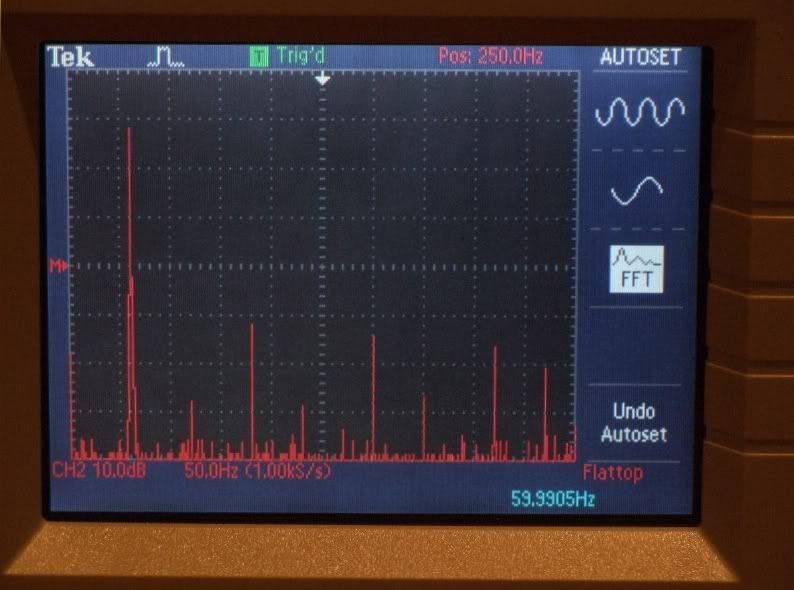
Figure 15. FFT of Statement SC power output with SACD player unplugged.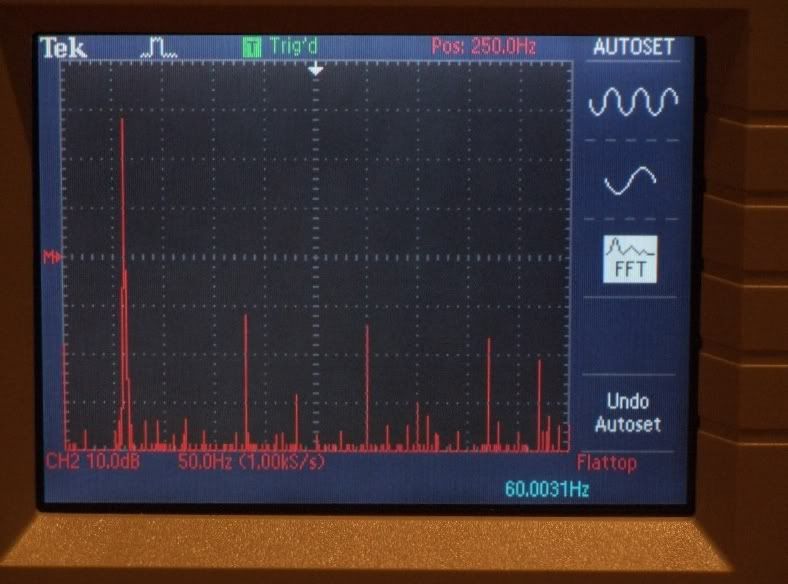
Figure 16. FFT of Statement SC power output with SACD player plugged in and playing.
Digital devices are supposed to be notorious for dumping noise back on to power lines. I was curious to see what my Cary Audio CD 306 Pro SACD player was doing in that regard. Oddly enough, the noise on the power line decreased when the SACD player was turned on. I expected the noise figure to increase when the SACD player started playing but it did not. I repeated this five times and the results were the same. Therefore, either there was no change in the noise figure when the SACD player was turned on and engaged or the change was too small or of a nature that could not be detected by my oscilloscope. The SACD player and right power amp are the only components on the right dedicated audio circuit. The preamp, phono preamp, turntable battery charger, and left power amp are on the left dedicated audio circuit.
I sent figures 15 and 16 to Cary Audio's engineering department and asked for their explanation. This is the response I received:
"Seems to me you have a ground loop and when the CD 306 SACD PRO
is added to your system this is reducing this noise you are describing."
My response to their response:
"Ok, but why would simply turning on the CD 306 Pro reduce the background noise on the AC line? It seems like the noise should increase when another component is added."
Cary's second response:
"Not necessarily. That is the funny thing about ground loops they do not respond the way you think they should. The short explanation to this is when you introduce another component to your system it may or may not change the potential difference between ground of the circuit in relation to the potential difference to the other components. This may help in explaining what is occurring in your system.
Actually, I would have preferred the long explanation, but I did not press further.
Other measurements revealed that the preamp and phono preamp do kick back a small amount of noise onto the power line. The phono preamp is noisier than the preamp. The turntable battery charger did not generate any noise that I could detect.
Disclaimer
Please don't misunderstand my intent for publishing this report. There is no need for anyone to puff up their chest and tell me that Statement SC's are not the be all and end all of power cables and that there are other good cables out there. I know that. The Statements are not even the best that PS Audio makes. I am merely reporting on the noise characteristics of my components and cables at my house. Someone else may have superconducting liquid nitrogen cooled cables with spectral noise figures that look like a blank sheet of paper. If so, good for them. I'd love to read about it. There's lots of great gear in the market place to suit everyone's taste and budget.
And now, a word from the president of the International Cable Naysayers Cult: PLEASE, in Heaven's name, make him stop!! Proud and loyal citizen of the Digital Domain and Solid State Country!
PLEASE, in Heaven's name, make him stop!! Proud and loyal citizen of the Digital Domain and Solid State Country! -
Reserved For Follow UpProud and loyal citizen of the Digital Domain and Solid State Country!
-
VERY interesting. Your study gives quantifiable findings. But you still have WAY too much time on your hands...;)
I'm glad of it, to give the "if you can't measure it, it doesn't exist" crowd something to ponder. -
Not a peep from JohnK or WilliamM2; nice work as always Raife
H9"Appreciation of audio is a completely subjective human experience. Measurements can provide a measure of insight, but are no substitute for human judgment. Why are we looking to reduce a subjective experience to objective criteria anyway? The subtleties of music and audio reproduction are for those who appreciate it. Differentiation by numbers is for those who do not".--Nelson Pass Pass Labs XA25 | EE Avant Pre | EE Mini Max Supreme DAC | MIT Shotgun S1 | Pangea AC14SE MKII | Legend L600 | BlueSound Node 3 - Tubes add soul! -
That's not quite true H9. WilliamM2 made a special request in post #31 of part 1 of this series.Even better would be some measurements at the analog outputs.Proud and loyal citizen of the Digital Domain and Solid State Country!
-
But you still have WAY too much time on your hands...;)
Actually, this sort of study is suitable for publication in technical journals and is closely related to my academic work. Sort of like a two birds/one stone kind of deal.;)I'm glad of it, to give the "if you can't measure it, it doesn't exist" crowd something to ponder.
Never have understood that mindset. There's lots and lots of electrical phenomena that can't currently be measured, like, for example, the thoughts and memories inside a human's or animal's head. Sure, we can track down and measure the gross electrical activity in the brain, but tracking down and quantifying an individual thought or accessing a particular memory with an external measurement apparatus is not possible with any current technology.
How much space do thoughts and memories take up in the brain? Does the current inability to measure these quantities prove their non-existence? This is absurd.Proud and loyal citizen of the Digital Domain and Solid State Country! -
DarqueKnight wrote: »Does the current inability to measure these quantities prove their non-existence? This is absurd.
This is where I say slap and sterilize. If people are so stupid that they believe everything can be measured with currant technology they should not reproduce. Look at some of the silly things scientist have believed in less than the last 200 years. Am I saying that science will never be able to measure whats going on? I have no idea. Am I saying people have little tiny minds that are way to small to even get a grasp on all the stuff that is around us? WE ALL DO People that believe that you can measure sound quality via a few different measurements really prove just how narrow minded, and ignorant they really are:( If you lock yourself into the little tiny box of just L.C.R. then there is a real good chance that you are really missing out. Another belief of mine is some peoples minds process audio different than others. I think that's as ridiculous as telling someone what taste good according to your tongue, or the molecular makeup of food. Something to chew on for believers, and non believers alike. Non believers pull your head out of your A$$. You can hear better that way:eek::p:D I could not resist:D
People that believe that you can measure sound quality via a few different measurements really prove just how narrow minded, and ignorant they really are:( If you lock yourself into the little tiny box of just L.C.R. then there is a real good chance that you are really missing out. Another belief of mine is some peoples minds process audio different than others. I think that's as ridiculous as telling someone what taste good according to your tongue, or the molecular makeup of food. Something to chew on for believers, and non believers alike. Non believers pull your head out of your A$$. You can hear better that way:eek::p:D I could not resist:D
I am not Paul Harvey.
Good Day.Please. Please contact me a ben62670 @ yahoo.com. Make sure to include who you are, and you are from Polk so I don't delete your email. Also I am now physically unable to work on any projects. If you need help let these guys know. There are many people who will help if you let them know where you are.
Thanks
Ben -
DarqueKnight wrote: »There's lots and lots of electrical phenomena that can't currently be measured.
Agreed, so there lies the rabbit hole. Just as these companies we have collectively as individuals come to know, trust and believe in give us their measurements of a product, they cannot measure everything either. In the end someone must sit down and listen to the product before it goes to market. In some cases the actual CEO will do the final listening of each new component just to make sure it sounds right.
Of course once a product hits your rack the owner gets to make the final decision on what has or has not happened, a wonderful hobby.
RT1 -
I believe many things audio can be measured, to a point.
We know bigger gauge wire, using silver, and wire twisting
all have an effect on cable. We know that higher inductance or
capacitance will have a corresponding effect on sound.
But everything works together, so sometimes there is no way
to predict how the different parts of our systems will sound in the end.
The real thing to take away from this is there are certain things to
do for good sound. With a bit of budget planning, you can get pretty
good results with a few simple rules. I firmly believe in good wiring
and dedicated circuits. 12/3 on a dedicated breaker will give most people
a good bang for the buck return. Spending $2k on specialized cable and
outlets will not yield as much gain. True in everything audio.
I remain open minded to many things that only a few short years ago
I would of laughed at. Power cables are on my to do list at some point!:D"The legitimate powers of government extend to such acts only as are injurious to others. But it does me no injury for my neighbour to say there are twenty gods, or no god. It neither picks my pocket nor breaks my leg." --Thomas Jefferson -
Another belief of mine is some peoples minds process audio different than others.
Exactly. System synergy, configuration, and resolution also play a part. This is why blind and double blind tests are pretty much useless for evaluating audio. There are simply too many variables to consider to have a truly controlled test.I think that's as ridiculous as telling someone what taste good according to your tongue, or the molecular makeup of food.
Equally ridiculous is telling someone that just because you can't perceive a sonic difference, there absolutely is no difference.
I can taste two deserts and not perceive a difference between them. An experienced chef can taste the same deserts and then proceed to write out the recipes, down to the amount of the specific ingredients, for each.Proud and loyal citizen of the Digital Domain and Solid State Country! -
Nice write up, measurements rule!
If you've got some extra ferrites laying around, pop them on the stock cord and see if it evens the score. -
People that believe that you can measure sound quality via a few different measurements really prove just how narrow minded, and ignorant they really are:(
Keyword being quality. There is a difference between 'sound' and an individuals 'perception of sound'. Sound can be measured -that's a fact. However, perceived quality of sound is what makes us unique and provides a never ending source of discussion. -
Probably wouldn't make a difference.If you've got some extra ferrites laying around, pop them on the stock cord and see if it evens the score.
Taken from: http://www.psaudio.com/products/xstream_power_statement_sc_overview.aspA shield that cleans?
Each SC power cable has multiple shields to keep the noise from the powerline contained and unwanted radiation from entering the power stream.
But we didnt stop at just shielding. PS Power SCs actually clean the noise from the AC line while it is powering your equipment.
Every SC power cord employs magnetically active ferrite powder evenly distributed along the entire length of the outer jacket. This produces the worlds first distributed inductive shield that actively cleans some of the high frequency noise on the AC line itself!
This is a major achievement in the art of power cable delivery, resulting in the lowest noise floor of any power cord we know of. And that means a richer listening and/or viewing experience to you!"He who fights with monsters should look to it that he himself does not become a monster. And when you gaze long into an abyss the abyss also gazes into you." Friedrich Nietzsche -
Very nicely done, DK, thoroughly understandable and appreciated. Another reason why this forum is one of the best. Your thread reminded me of the articles that used to appear in Audio magazine. It is this kind of well written article and follow-up discussions that will advance everyone's understanding and enjoyment. It's not enough to say, "I like..." or "I didn't like..." but we have to figure out why something sounded the way it did. what is it about a power cord that could cause a change further down the audio chain.
Again, that you very much for your excellent thread and I encourage you to continue.
Anyone happen to have a scanning electron microscope and we can begin looking at record groves?
Cheers, Jed



